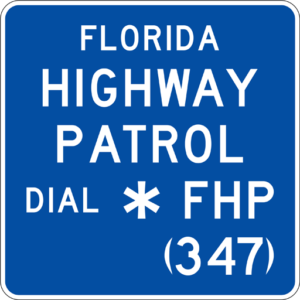About
Quick links: What Are Managed Lanes? | Benefits | Safety | History | Future | Reports
What Are Managed Lanes?
The Florida Department of Transportation (FDOT) is providing motorists choices with managed lane options on some of its most heavily traveled highways. Managed lanes are highway lanes designed to address congestion and have been successfully implemented in other areas around Florida, throughout the United States, and around the world. Managed lanes can take on many forms including reversible lanes, high-occupancy vehicle (HOV) lanes, and express lanes.
FDOT’s managed lanes approach on Interstate 4 (I-4) in Orange and Seminole counties is known locally as I-4 Express. I-4 Express was constructed as part of the I-4 Ultimate project, a 21-mile reconstruction of I-4. Motorists have the option to enter the lanes, two in each direction, via limited access points to more reliably get where they need to go.

Benefits
- Less Stress – I-4 Express is designed to keep traffic moving, which provides more reliable travel times.
- Avoid Congestion – I-4 Express can help you skip congested areas when traveling through the busiest interstate corridor in Central Florida.
- No Stopping – Tolls are collected electronically with an active and properly mounted SunPass or any other Florida-accepted transponder.
Safety
The moments after a traffic incident can mean the difference between a minor inconvenience and a major road closure. That’s why FDOT is taking measures to anticipate and address all types of events to keep motorists safe and traffic moving along I-4 Express.
- I-4 Express allows two-axle vehicles only. Large trucks and trailers must remain in the general use lanes. This can help reduce motorists’ anxiety and shorten incident clearance time when incidents happen.
- Wider shoulders on the right give motorists room to pull over when they are experiencing mechanical issues. This space allows traffic to continue moving while the driver calls 911 in an emergency or *347 for non-emergency help.
- Road Rangers, a fleet of roadside-assistance trucks and their drivers, respond to motorists in need. Free of charge, they can change a flat tire, provide a gallon of gas, make minor mechanical repairs, and tow a disabled vehicle to a safe spot out of the flow of traffic. These highway heroes patrol I-4 Express around the clock and are just a phone call away at *347 (*FHP).
- When crashes occur, I-4 Express features access points approximately every 2 miles, allowing emergency vehicles to quickly respond to and safely clear incidents. Entry points may be the same ramps drivers use between I-4 Express and the general use lanes or special Emergency Access Gates (EAGs). The retractable EAGs are built into the concrete barrier wall separating I-4 Express and the general use lanes. The gates can only be opened by emergency responders or staff at the Regional Transportation Management Center (RTMC).
- Fire suppression systems at key locations throughout I-4 Express help emergency responders rapidly respond to fires. These systems aid in conveying lifesaving resources where physical challenges exist such as high-level bridges at the I-4 and State Road (S.R.) 408 interchange.
- FDOT reminds motorists to do their part and reduce their risk of being involved in a crash. Follow the posted speed limit while traveling on I-4 and I-4 Express, wear a seat belt, avoid distractions, and give emergency responders and stopped vehicles ample space.

History
I-4 Express was conceived as part of the I-4 Ultimate project. The 21-mile makeover of I-4 between Kirkman Road and Longwood rebuilt and reconfigured lanes and bridges to increase the lifespan of the interstate and accommodate motorists today and in the future.
Shortly after I-4 opened to traffic in the late 1950s, FDOT began making enhancements, adding capacity and connectivity to the interstate in an effort to keep pace with the region’s growth.
Determining there was no viable way to outbuild congestion, FDOT ultimately selected a managed lanes approach to meet Central Florida’s needs. The current configuration from Kirkman Road through S.R. 434 is the ultimate buildout of I-4, maximizing the available right of way.
There are examples of managed lanes throughout the United States and here in Florida. 95 Express and 595 Express in southeast Florida, Veterans Expressway in Tampa, and 295 Express in Jacksonville are managed lanes facilities already in use by Florida motorists.
Future
Building a strong transportation network is key to having a successful regional transportation system. By providing transportation choices, mobility is enhanced, and communities are better connected.
FDOT is investing in roadway and multimodal improvements so the community can continue to enjoy safe and reliable choices in how they travel. While most of the improvements on I-4 over the past several years have been made within the I-4 Ultimate project limits, the Department has been studying and planning for improvements to the east and west to continue modernizing Central Florida’s transportation backbone.
As a continuation of the I-4 Ultimate improvements and to meet growing demand along other areas of the I-4 corridor, FDOT is evaluating and designing future improvements through the I-4 Beyond the Ultimate program. To learn more about design plans in development, including managed lanes, visit I4Beyond.com.
Monthly Mobility Reports
FDOT manages I-4 Express and collects data to monitor daily performance. This data is compiled and published in monthly reports that summarize important metrics such as average travel speeds, traffic volumes, and facility availability. The reports can be found by visiting Florida Department of Transportation (cflsmartroads.com).


